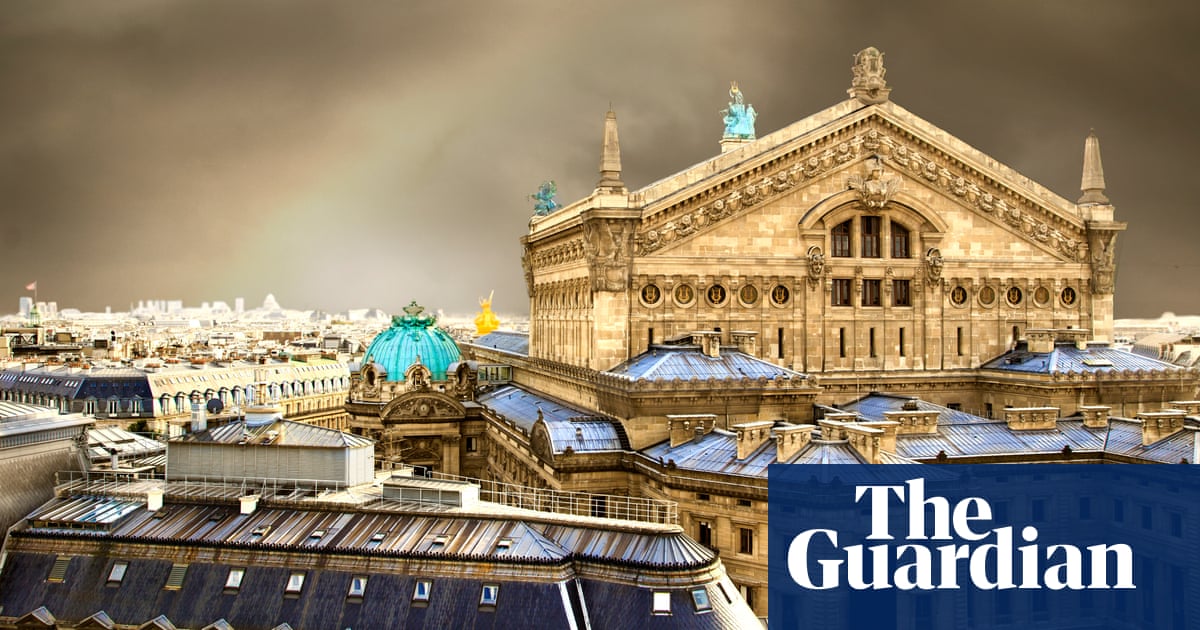
Paris is called the City of Light, possibly because of its early adoption of gas street lighting. But that would not explain why, as I approach Gare du Nord on Eurostar during daytime, I experience a soft dazzle, similar to when I see a pebbly beach. This is not a meteorological phenomenon; the weather in Paris is only slightly better than London’s. Instead, the luminosity owes something to the buff or light-grey limestone of the older buildings (including the Sacré Coeur, rearing like a great ghost to my right), its pallor perpetuated by the whitewashed exteriors of newer buildings.
The light in Paris was a concern of the impressionists, the movement whose 150th anniversary is marked by the Musée d’Orsay’s forthcoming Inventing Impressionism exhibition. On 15 April 1874, a group of 31 artists, including Monet, Pissarro, Degas and Renoir, “hungry for independence” (as the Musée d’Orsay website has it) from the strictures of the Académie des Beaux-Arts, staged their own exhibition. Inventing Impressionism will feature works from that show and others of the time: “Painted scenes of modern life, and landscapes sketched in the open air, in pale hues and with the lightest of touches.”
The new movement got its name from Claude Monet’s Impression, Sunrise, a blurry view of Le Havre in Normandy, where he grew up. But, as Stephen Clarke writes in his book Paris Revealed, “Paris is the spiritual home of impressionism”, and their work is often discussed in relation to the remaking of the city by Baron Haussmann, commissioned by Napoleon III to “aérer, unifier et embellir” (open up, connect, beautify).
Monet painted the view from his rooms, depicting a boulevard full of light and full of people
Historian Andrew Hussey writes in his book Paris: The Secret History of “an urban infrastructure that had barely been touched or improved since the late-medieval period … There were no straight roads through Paris, whose centre, Île de la Cité, was a dark and muddy labyrinth.” Haussmann created a network of boulevards, light by virtue of their width, the limestone he employed, zinc or slate roofs that shine when wet, and the pale trunks of the plane trees.
The Grands Boulevards of the Right Bank were especially important to the impressionists. The 1874 exhibition was held on Boulevard des Capucines, in an upper storey at number 35. Monet painted the view from his rooms there, depicting a boulevard full of light (enhanced by reflections off snow) and full of people. The Grands Boulevards were pleasure zones, the haunt of flâneurs, and lined with restaurants, theatres and, later, cinemas. (The Grand Rex, on Boulevard Poissonnière, makes its own contribution to the City of Light with its neon blaze.)
Another place important to the impressionists was Batignolles, a northern district annexed to Paris on Haussmann’s suggestion. Monet made numerous studies of nearby Saint-Lazare station, following the injunction of Émile Zola to find the “poetry” in stations. In Zola’s novel La Bête Humaine, Saint-Lazare is “immense, dreary, drenched with rain, pierced here and there with a blood-red light, vaguely peopled by opaque masses … ”
It was this opacity that the painter sought. Obscure and broke at this point, he marched up to the station master, introducing himself as “the painter, Claude Monet” with such authority that his request that all the engine drivers generate as much steam as possible was granted.
In Édouard Manet’s The Railway, a young woman and a girl are depicted on a bridge overlooking Saint-Lazare. A gout of steam rises behind them, looking like something that shouldn’t be there, a great smudge. It’s still interesting to watch the trains from that bridge (I speak as a rail enthusiast) but they are now electric, and the sky above them seems empty.
Batignolles is off the tourist trail and has been called Paris’s hippest neighbourhood, but there’s something sleepy about it, a sense of having wide streets to oneself. That’s the mood of Gustave Caillebotte’s painting Peintres en bâtiment. Workmen paint a shop front, and the long, empty street stretches away, with one of those white Parisian skies overhead. It has been suggested that the workmen represent painters of the more artistic sort, coming to terms with the scale of the new Paris.
Haussmann made Île de la Cité a zone of grand buildings, with a luminosity of their own
But let’s circle back to that original heart of darkness: the Île de la Cité. Haussmann made it a zone of grand buildings, with a luminosity of their own – the gilding on the gates of the Palais de Justice can dazzle on a sunny day. In the novels of Georges Simenon, Inspector Maigret works at 36 Quai des Orfèvres on the island: it’s a whitish, castle-like building that housed the detectives of the Paris police until they recently relocated. The detective is a connoisseur of the changing light over the river, and in Maigret’s Pickpocket, he observes “a haze hanging over the Seine, less dense than mist, made up of thousands of tiny, brilliant, living particles peculiar to Paris”.
Not all the luminosity is down to Haussmann. Anyone who walks through the gilded gateway between the Tuileries Garden (rendered ambiguous, in soft green and pinkish tones, by Monet in Les Tuileries) and Place de la Concorde is in a pre-Haussmann world. In Henry James’s novel The Tragic Muse, artist Nick Dormer looks over “the great square, the opposite bank of the Seine, the steep blue roofs of the quay, the bright immensity of Paris”.
Place de la Concorde is being embellished for this summer’s Olympic Games, and I recently saw a lorry there, loaded with typically ornate lamp-posts. In any other town, this would have looked like a delivery of theatrical props, but in Paris it was just a job lot of streetlights.
They would be too big for the parts of the city Haussmann didn’t touch, like the Marais or Montmartre. There, lamps tend to be fitted to the walls of the narrow streets which, for some, are the most characterful in Paris. I love the little bars of Montmartre especially. But the care with which they are lit – often with fairy lights around windows or mirrors – may reflect a lesson learned from Haussmann, in whose favour it could also be said that without him we might not have had the impressionists.
Impressionist exhibitions
Normandy
The Normandy impressionist festival, which started this week and runs until 22 September, examines connections between the region and the art movement. Events include an exhibition at the Rouen Fine Arts Museum contrasting works by James McNeill Whistler with those of his impressionist contemporaries; Robert Wilson’s light projections on the facade of Rouen Cathedral (24 May-end September); and Impressionism and the Sea at the Musée des Impressionnismes in Giverny (29 March-30 June).
London
Monet and London: Views of the Thames at the Courtauld in Somerset House (27 September–19 January 2025) exhibits some of the artist’s prolific output from his time in the capital between 1899 and 1901. The Houses of Parliament, Charing Cross Bridge, Waterloo Bridge and the Houses of Parliament are depicted “full of evocative atmosphere, mysterious light and radiant colour”. Although Monet wanted to show these paintings in London, plans fell through and this is the first time they have been the subject of a UK exhibition.
Andrew Martin is the author of the Reading on Trains Substack. Train travel to Paris was provided by Eurostar. Inventing Impressionism is at the Musée d’Orsay from 26 March–14 July












